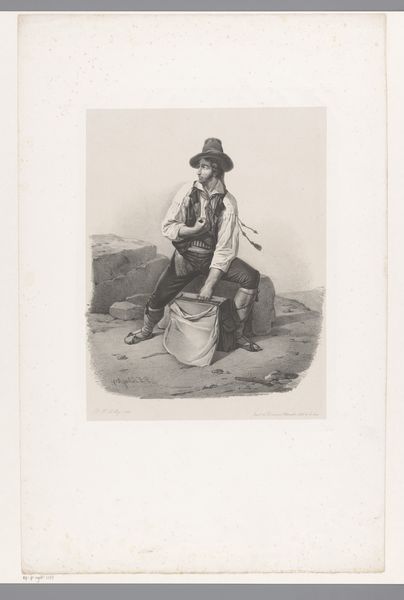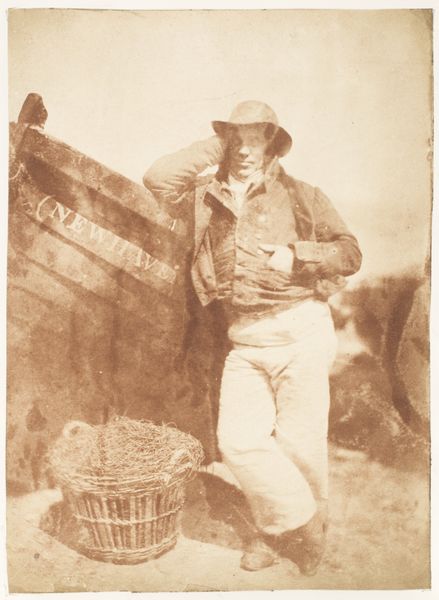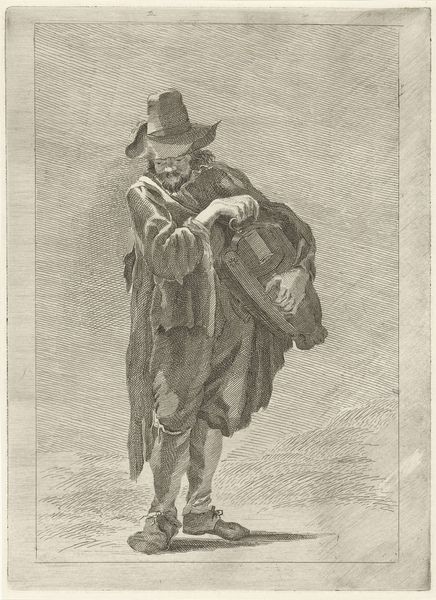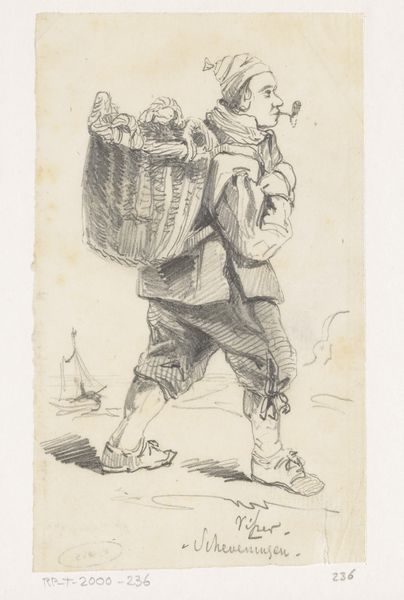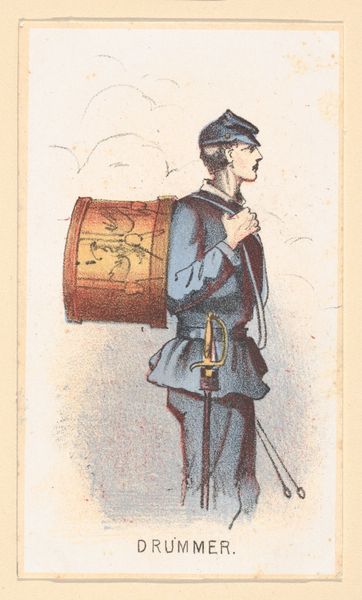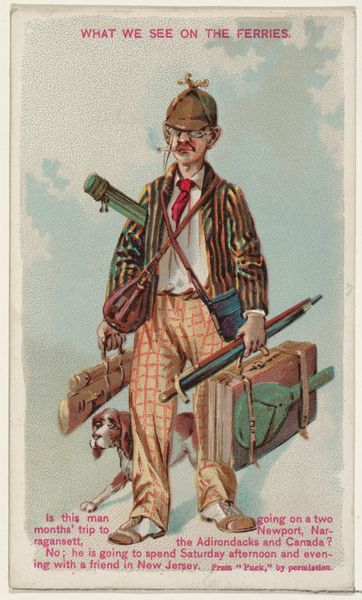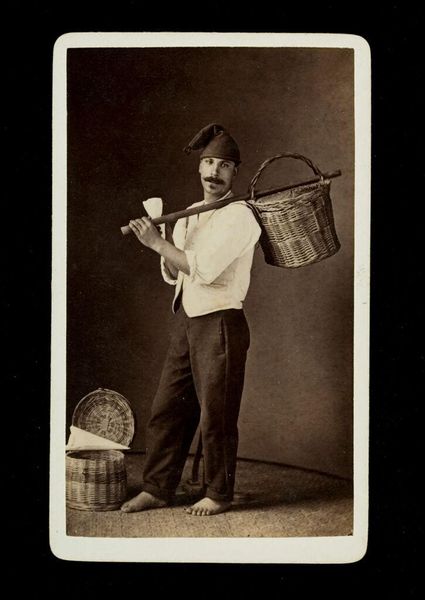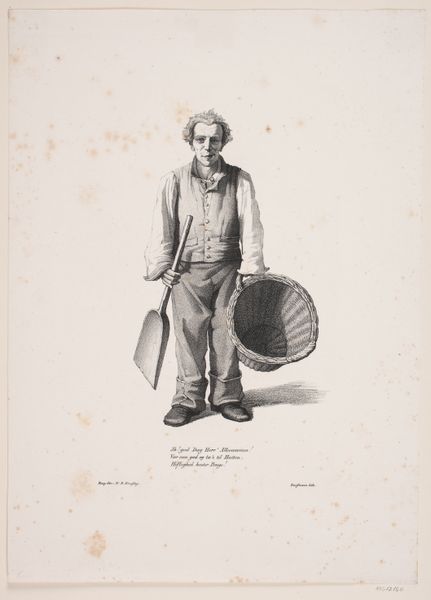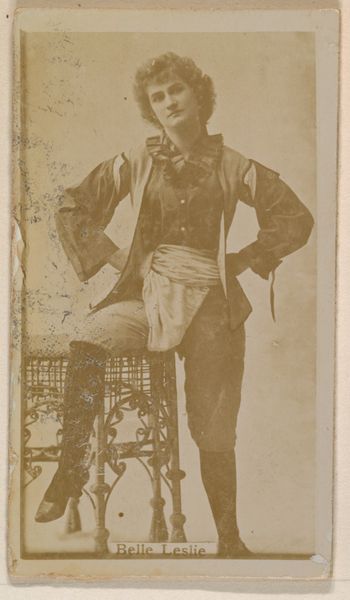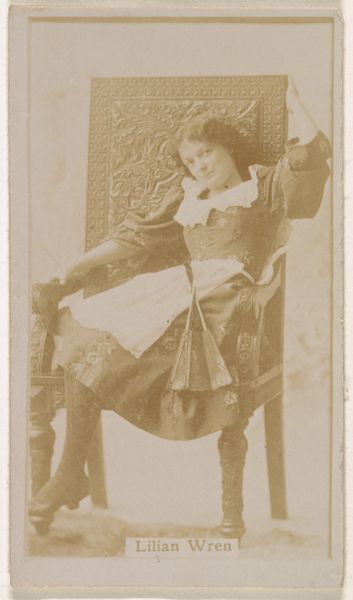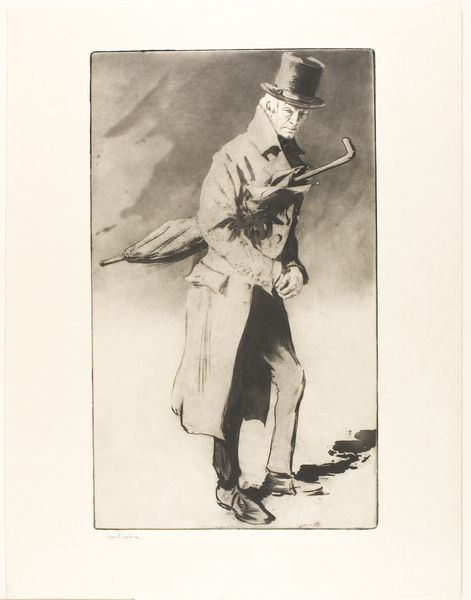
photography
#
portrait
#
still-life-photography
#
16_19th-century
#
pictorialism
#
archive photography
#
negative
#
photography
#
19th century
Copyright: Public domain
Editor: Here we have a photographic portrait of Felix Nadar, photographer and aeronautical scientist. He’s in a hot air balloon basket, looking off to the side with binoculars. There's something incredibly audacious about the image; how do you interpret it? Curator: The audaciousness stems from the merging of technology, art, and self-representation within a rapidly changing socio-political landscape. Nadar was a staunch Republican. How might his passion for both photography and ballooning – two nascent technologies at the time – be interpreted as acts of political defiance? Editor: Political defiance? I hadn't considered that. Curator: Think about it. Photography democratized portraiture, challenging the elitism of painting. Ballooning offered a new, almost god-like perspective, literally rising above the limitations of terrestrial vision. Nadar embraced both and made them his own. Consider, too, who had access to these technologies at the time, and who was excluded. Editor: So, the very act of him, a man, engaging in these technologies could be seen as a challenge to the existing power structures? It’s fascinating how technology can become so intertwined with social identity and power. Curator: Exactly! And think about the visual language: the top hat, the serious gaze, the sense of control amidst the clouds. Nadar is constructing an identity here, one that’s simultaneously grounded in bourgeois respectability and unbound by earthly constraints. What does that suggest to you? Editor: It sounds like Nadar wasn't just capturing an image but making a statement about the potential of technology, the changing times, and his place in it all. I appreciate understanding how he pushes for political progress through his images! Curator: Indeed. By exploring art within the political, economic, and social issues of the day, we can understand the power structures that are at play and our places within them.
Comments
No comments
Be the first to comment and join the conversation on the ultimate creative platform.

